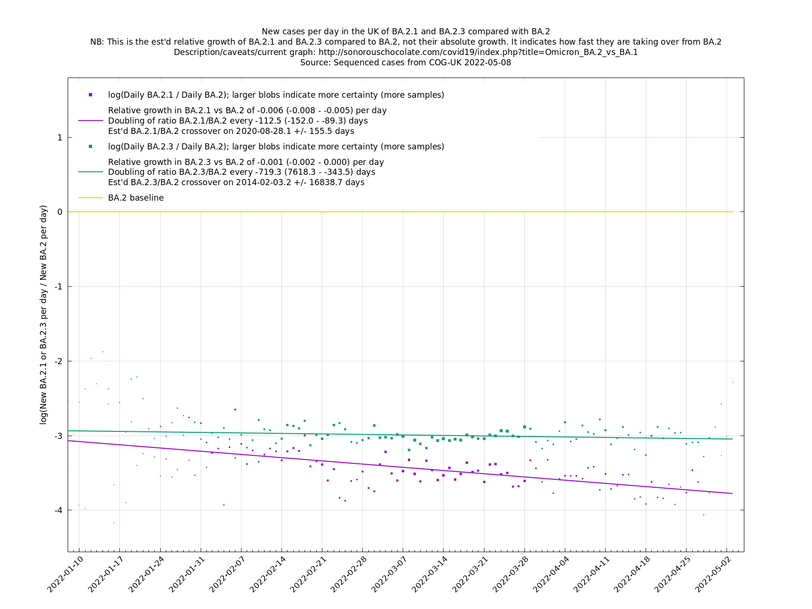UK variant comparison
These graphs should auto-update every few days, according to when there is new sequence data from COG-UK. You may need to hit shift-reload or some such to defeat your browser's cache.
BA.1 is used as the baseline variant for the first three graphs and BA.1.1 in the last one. A y-co-ordinate of 0 corresponds to equal number of new cases per day of a variant compared to the baseline variant. The purpose of presenting it this way, with a particular chosen baseline variant, as opposed to all three variants on an equal footing, is that it means we expect to get straight lines to some reasonable approximation.
Note that the growth estimates here rely on sequenced cases, of which there are about 10,000 per day, being representative of infections. This assumption may or may not hold, though arguably a good linear fit over an extended period (say, several weeks) constitutes some evidence in its favour, because many distortions you may think of, such as preferential sequencing of a particular variant for a limited time period, or different growth rates in different subpopulations, would often have the effect of knocking the relationship off being linear.
Update 2022-04-06: The BA.* lineages are now classified into many more sublineages. For the purposes of these graphs, a sublineage will be assigned to the most recent ancestor (largest prefix) amongst those considered for the graph in question. For example, in the BA.1/BA.1.1/BA.2 graph, BA.1.17, BA.1.1.7, BA.2.1 will be assigned to BA.1, BA.1.1, BA.2 respectively. But in the BA.1/BA.2 graph these will be assigned to BA.1, BA.1, BA.2 respectively. (This changes the meaning of the BA.1/BA.2 graph from previously, as now BA.1.1 is included in BA.1.)
Program used for analysis: uk_var_comp.py.





